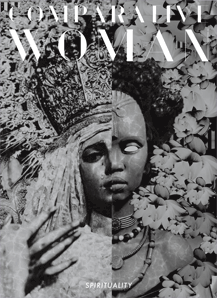Welcome to Comparative Woman!
Comparative Woman is an online journal exploring topics related to comparative literature and women/gender studies through art and academic essays. We seek to give artists and scholars a platform for reflecting on their thoughts and experiences and to present our readers with unique, diverse, and thought-provoking art and scholarship created by women and the LGBTQ+ community or about women and the LGBTQ+ community in mediums both in and outside of the Western Literary Canon.
Vol. 2, No. 2 Best Essay Award: Mridula Sharma, "Against Conflict, Against Occupation".
Submissions now open for Vol. 3, "Mapping". Deadline for submissions June 15, 2024.
Current Issue: Volume 2, Issue 2 (2024) Conflict: Continuing the Conversation
Articles
Women, animals, food: Planetary perspectives on the non-(hu)man
Samu/elle Striewski
Feminist Phenomenology and First-Person Narrative: Understanding Gender and Social Conflict in Anna Burns’ Milkman
SUSHREE ROUTRAY and Rashmi Gaur Professor
Interculturality, Creolization, and Globalization in "Ángeles nómadas" by Minelys Sánchez
Cecily Bernard
Madness as Response to Inherent Cultural Conflicts in Anglophone Fiction from 1700 to 2020
Anna Klambauer
Conflict and race in literature & law. The case of Americanah
Emanuela Ignatoiu Sora
Poetry

Editors
- Editor in Chief
- Meghan Hodges
- Co-Editor
- Amber Jurgensen
- Editor
- Chris Flakus
- Editor
- Jacopo Aldrighetti
About this special issue
This issue derives from presentations and conversations at Louisiana State University's 7th Annual Languages and Literatures Conference, hosted together by the graduate programs in Comparative Literature and French and Francophone Studies, which took place in March of 2023. Over sixty scholars from regions around the globe joined to discuss "Conflict" in a wide array of literary, linguistic, and historical contexts.
